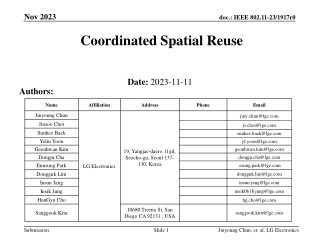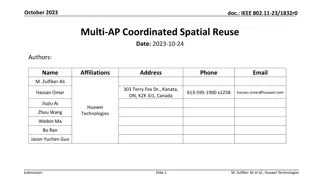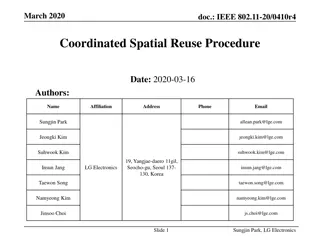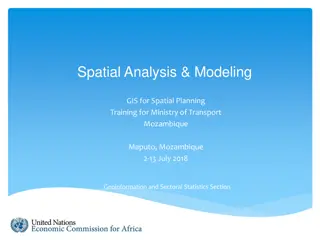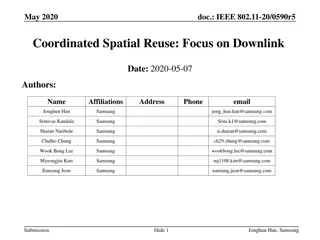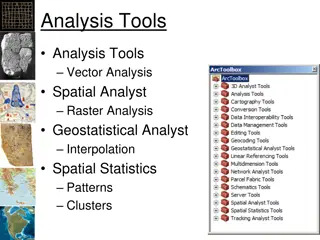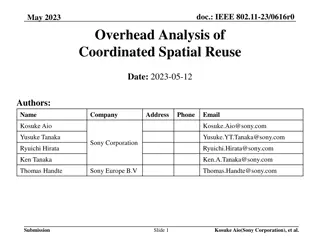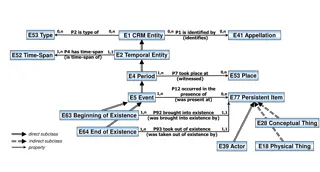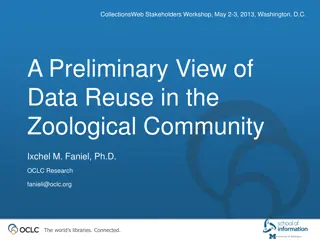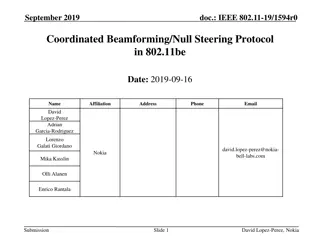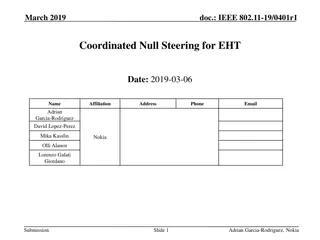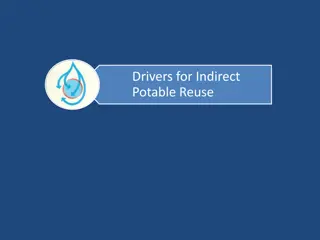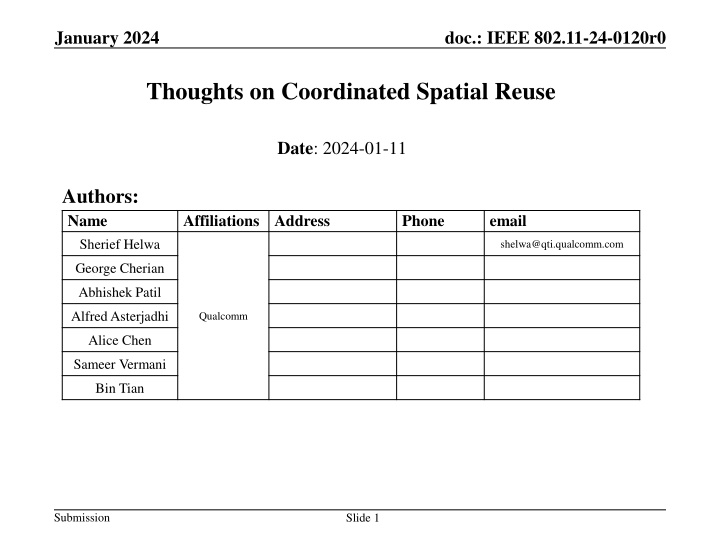
Coordinated Spatial Reuse in IEEE 802.11: Simplifying Mechanisms
Explore a proposal for coordinated spatial reuse in IEEE 802.11 networks to reduce complexity while maximizing efficiency. The focus is on a simpler approach that leverages longer-term signaling and categorizes clients for optimized service period reuse, offering insights into a more streamlined process.
Download Presentation

Please find below an Image/Link to download the presentation.
The content on the website is provided AS IS for your information and personal use only. It may not be sold, licensed, or shared on other websites without obtaining consent from the author. If you encounter any issues during the download, it is possible that the publisher has removed the file from their server.
You are allowed to download the files provided on this website for personal or commercial use, subject to the condition that they are used lawfully. All files are the property of their respective owners.
The content on the website is provided AS IS for your information and personal use only. It may not be sold, licensed, or shared on other websites without obtaining consent from the author.
E N D
Presentation Transcript
January 2024 doc.: IEEE 802.11-24-0120r0 Thoughts on Coordinated Spatial Reuse Date: 2024-01-11 Authors: Name Sherief Helwa Affiliations Address Phone email shelwa@qti.qualcomm.com George Cherian Abhishek Patil Alfred Asterjadhi Qualcomm Alice Chen Sameer Vermani Bin Tian Submission Slide 1
January 2024 doc.: IEEE 802.11-24-0120r0 Objective Background There are many contributions presented on Coordinated Spatial Reuse Most of the contributions assume TXOP based reuse, which adds significant overhead and complexity: Per-TXOP Interference measurement and signaling between TXOP sharing & Shared APs Last moment scheduling decision that the TXOP shared AP has to make, based on which clients TXOP sharing AP has scheduled Tx power backoff decision & MCS selection that the TXOP shared AP has to make, based on which clients TXOP sharing AP has scheduled Objectives of this contribution Provide some thoughts on a simpler coordinated spatial reuse mechanism Submission Slide 2 Sherief Helwa, Qualcomm Inc
January 2024 doc.: IEEE 802.11-24-0120r0 Design Goal Goal of this proposal is to strike a balance between complexity Vs gains In enterprise cases, large proportion of clients are mostly (semi)static. So, can we have a coordinated SR, using a longer-term signaling? Say, multiple of Beacons through management frame signaling Avoid last moment signaling that requires complex scheduling decisions We have the concept of TWT introduced in 11ax, with Coordinated rTWT being considered in 11bn. Can we enable reuse at the Service Period level instead of at a TXOP level? Note: Does not assume that the clients follow rTWT Submission Slide 3 Sherief Helwa, Qualcomm Inc
January 2024 doc.: IEEE 802.11-24-0120r0 Proposal Summary Classify the clients as inner or outer clients (on a semi static basis) Inner clients are those clients that experience less interference from neighboring APs Allow reuse at a Service Period basis level Reuse Service periods for inner clients Vs Orthogonal Service periods for outer clients A Sharing AP use long term signaling to announce reuse criteria and the service periods Use longer term signaling (say, Beacon, or management frame) Reuse SPs, where inner STAs are scheduled Orthogonal SPs for outer clients BSS-1 Reuse SP (Sharing AP) Shared AP uses this SP BSS2 SP BSS-1 Outer STA time Outer STA Inner STA Shared AP uses this SP Reuse SP (Sharing AP) Inner STA SP BSS-2 time Submission Slide 4 Sherief Helwa, Qualcomm Inc
January 2024 doc.: IEEE 802.11-24-0120r0 Some more details Sharing AP pre-determines the inner zone clients, on a semi-static basis For example, the Sharing AP may determine inner/outer client based on its client s reporting of Beacon power from neighboring APs that is measured periodically, (Or other means of inner/outer classification that AP may choose) Sharing AP advertises Spatial Reuse parameters on a long-term basis Advertises Reuse Service Periods , Max interference level etc. that sharing AP can allow Shared AP determines the candidate clients based on SP Sharing AP criteria Provides flexibility for shared AP to schedule its clients without getting last moment values on spatial reuse parameters CSR DL-SP CSR UL-SP CSR DL-SP B SP SP SP B Multiple CSR SPs in a Beacon. Sharing AP announces CSR parameters in a beacon for the SPs. Submission Slide 5 Sherief Helwa, Qualcomm Inc
January 2024 doc.: IEEE 802.11-24-0120r0 Simulation Scenario Gains are analyzed for different inter-AP distances in a 5-AP topology The AP under test is AP1 for which performance metrics are collected Reason: AP1 is a representative AP of a larger topology of a dense network BSS radius expands as inter-AP distances increase AP3 S31 S34 S32 S35 AP4 AP2 S33 S43 S13 S23 Parameter Assumption S22 S14 S11 S21 S24 S41 EDCA Medium access distributed evenly among APs S42 S12 AP1 S44 S45 Scheduler Round-robin [STA1 STA2 STA3 STA1 STA2 ] S25 S15 S55 Rate Adaptation Ideal (Genie-aided PER estimate which maps to the best goodput in the rate table) S53 AP AP AP AP AP AP AP S54 S52 NSS 2 (NSS2 RA table used) AP AP APUT AP AP AP AP S51 AP AP AP AP AP AP AP Variable Tx Power No power change with different MCS values AP5 AP AP AP AP AP AP AP PL Model TGn Path loss model (without wall loss) AP AP AP AP AP AP AP AP AP AP AP AP AP AP Rate Calculation Average across all possible locations within BSS area AP AP AP AP AP AP AP AP AP AP AP AP AP AP AP AP AP AP AP AP AP Submission Slide 6 Sherief Helwa, Qualcomm Inc
January 2024 doc.: IEEE 802.11-24-0120r0 Topology Details Topology resembles a Reuse-1 scenario: Square BSS coverage areas assumed As inter-AP distances increase, each AP coverage area is extended to include in between STAs and have no gaps in between Submission Slide 7 Sherief Helwa, Qualcomm Inc
January 2024 doc.: IEEE 802.11-24-0120r0 Simulation Results Schemes compared: Baseline: APs share every SP if RSSI is below ED TDM: APs share the medium in a round-robin fashion CSR: Sharing AP decides to share SPs where it serves inner clients Shared APs decide to do simultaneous transmissions in shared SP to serve their inner clients if RSSI is below ED Average throughput over all possible STA locations is calculated for the AP under study Average throughput is calculated versus midpoint SNR calculated at the edge client between adjacent APs Terminology: Midpoint SNR: Interference-free SNR at midpoint between two closest APs (?/2 away from AP1). X-axis of the plot represented in terms of decreasing midpoint SNR (representing increasing AP-AP distance) Submission Slide 8 Sherief Helwa, Qualcomm Inc
January 2024 doc.: IEEE 802.11-24-0120r0 Simulation Results Rate CDF curves were generated for the AP under study to understand how throughput is spatially distributed within the BSS under study Submission Slide 9 Sherief Helwa, Qualcomm Inc
January 2024 doc.: IEEE 802.11-24-0120r0 Simulation Results Rate CDF curves were generated for the AP under study to understand how throughput is spatially distributed within the BSS under study Submission Slide 10 Sherief Helwa, Qualcomm Inc
January 2024 doc.: IEEE 802.11-24-0120r0 Conclusion A simplified, Service-Period based Coordinated Spatial Reuse mechanism is considered in this presentation Significant complexity/overhead reduction can be achieved with this scheme. Initial gains analysis show that, with proper optimization of how inner/outer STA classification is done, we can achieve significant throughput gains over baseline scheme Gains analysis for other scenarios in progress Submission Slide 11 Sherief Helwa, Qualcomm Inc

